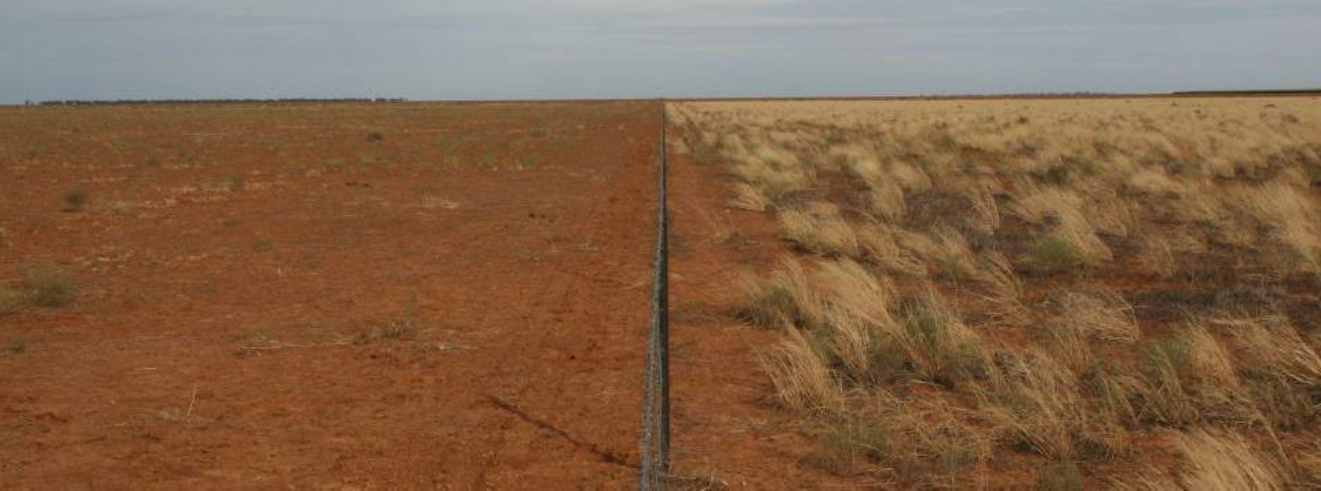Groundcover essential for healthy soils
 PRODUCTION ADVICE - MAY 2021 - AGRONOMY
PRODUCTION ADVICE - MAY 2021 - AGRONOMY
By Adrian Smith
Senior Land Services Officer - Mixed Farming Systems
P: 03 5881 9932 | M: 0447 778 515 | E: adrian.smith@lls.nsw.gov.au
Maintaining groundcover across the landscape is essential for healthy and productive soils.
Groundcover is the vegetation (both living and dead) that is in direct contact with the soil surface. Groundcover levels vary from year-to-year and season-to-season and are influenced by a range of factors including seasonal conditions (such as rainfall) and management (grazing, cultivation, burning etc).
We know groundcover (and the associated biological activity) has major positive effects on:
- Soil fertility
- Soil structure
- Water infiltration, water-holding capacity, runoff and rainfall impact
- Reducing soil water evaporation
- Buffering against temperature extremes
- Soil carbon
- Reducing soil erosion (both wind and water), and
- Nutrient cycling (and soil microbes)
- Weed infestation.
Where the soil is left unprotected, up to 100t/ha of valuable topsoil can be lost in a year (l mm depth of soil over one hectare weighs around 10t). Eroded soil cannot be readily replaced, and this will have a major impact on the sustainability and profitability of your property and farm business – your soil is your most important natural asset.
Groundcover also acts as an important ‘insulator’ against extreme temperatures. For example, daytime temperatures of 40oC and above see temperatures on bare soil well into the mid 500C’s – such temperatures significantly increase evaporation and effectively kill off many of the living organisms within the soil. Soils ‘bake’ rock hard, reducing rainfall infiltration and increasing the risk of erosion.
Groundcover also acts as a filter to reduce the loss of nutrients and soil sediments from runoff into dams, creeks and other waterways. Reducing this sediment and nutrient loss is important at both farm and catchment levels. You often hear people refer to soil acting like a sponge – soaking up and holding water – and soil organic matter (and groundcover) is vital in this process. Indeed, coming out of dry periods, soils with the ability to take up (and keep) those early (often intense) rainfall events within the plant rootzone will often be the quickest to produce dry matter, reduce runoff (and soil and nutrient losses) and maintain production for longer.
What level of groundcover should we be aiming to achieve?
Much research has been conducted into determining optimum levels of groundcover in Australia. To maximise production (which means maximising light interception by growing plants), we want to be aiming at 100 per cent actively growing groundcover.
To minimise wind borne erosion, we need to aim for a minimum of 50 per cent groundcover.
To minimise water borne erosion, we need to be aiming for a minimum of 70 per cent groundcover.
Along specific drainage lines, which can carry large volumes of water after heavy rainfall, aim to maintain 100 per cent groundcover.
What can I do to maintain groundcover?
Seasonal conditions can have a significant impact on groundcover levels.
However, we as land managers have an equally important role to play.
As can be seen in the accompanying photograph, groundcover levels can vary greatly under the same soil type and environmental conditions – where the only difference is a fence, and the management on each side of the fenceline!
 There are many things we can do maintain groundcover on our farms. However, there may be times when meeting the targets proves difficult. As well, strategic cultivation(s) can have an important role in our farming systems, whether it be for weed control, stubble incorporation or minimising disease and pests.
There are many things we can do maintain groundcover on our farms. However, there may be times when meeting the targets proves difficult. As well, strategic cultivation(s) can have an important role in our farming systems, whether it be for weed control, stubble incorporation or minimising disease and pests.
But the long-term benefits that can be gained from maintaining groundcover, and the associated improvements to soil health and condition, will largely outweigh any short-term implications.
Practices that aim to maintain (and improve) groundcover include:
- Reducing tillage and direct drilling of crops and pastures
- Incorporating perennial species into our farming systems
- Managing grazing pressure (such as stocking rates, rotational grazing etc)
- Establishing realistic groundcover or dry matter targets
- Moving stock off paddocks when target levels cannot be maintained (such as into containment areas)
- Minimising burning (or practicing ‘cool’ or late burns).
Groundcover is important for agricultural production, farm profitability and to improve the condition of our natural resources. Adopting practices and management techniques that maintain and improve groundcover will have significant benefits both to individual producers and the community at large.